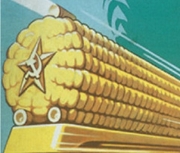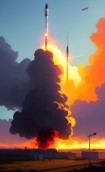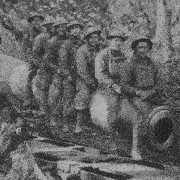|
What is the most powerful flying bug? This poll is closed. |
|||
|---|---|---|---|
| 🦋 |
|
15 | 3.71% |
| 🦇 |
|
115 | 28.47% |
| 🪰 |
|
12 | 2.97% |
| 🐦 |
|
67 | 16.58% |
| dragonfly |
|
94 | 23.27% |
| 🦟 |
|
14 | 3.47% |
| 🐝 |
|
87 | 21.53% |
| Total: | 404 votes | ||
|
Starsfan posted:I mean it's really hard to judge how the Russians stand with shell inventories because from what I understand Lostconfused posted:
|
|
|
|

|
| # ? May 26, 2024 03:16 |
Weka posted:Merry Christmas! That inflation predates the war, though. I don't think you can attribute the majority of inflation in 2022 to the war either. I think a lot of this inflation is due to covid killing or disabling a lot of people, constricting the available labor supply, and impeding manufacturing/distribution.
|
|
|
|
|
Ardennes posted:Technically, Russian forces could respond to Ukrainian fire, basically there wasn't a ceasefire How many weapons shot in self-defense trigger sirens?
|
|
|
|
Cpt_Obvious posted:Yeah that's called demand destruction, when the price surges so high that people lower their consumption to compensate. That doesn't seem to be the case. If it was a significant factor, oil companies would be struggling to make those record profits on the same wholesale prices. Looks like they just made a lot of money because the price increased while demand stayed steady.  https://www.mckinsey.com/industries/oil-and-gas/contact-us/snapshot-of-global-oil-supply-and-demand Hatebag posted:That inflation predates the war, though. I don't think you can attribute the majority of inflation in 2022 to the war either. I think a lot of this inflation is due to covid killing or disabling a lot of people, constricting the available labor supply, and impeding manufacturing/distribution. Yeah this is a good point and I'm going to try and find out how much of inflation is because of fuel prices. Weka has issued a correction as of 23:54 on Jan 6, 2023 |
|
|
|
Leandros posted:How many weapons shot in self-defense trigger sirens? How many shots triggered sirens?
|
|
|
|
Leandros posted:How many weapons shot in self-defense trigger sirens? Given Ukrainian forces proclivity for locating themselves near civilians, possibly quite a few.
|
|
|
|
Vomik posted:are RAAM any different than a standard landmine? Yeah. They are cannon-launched, anti-armor, and they self-destruct after a period of time measured in hours to day, not weeks to months.
|
|
|
|
 Looks like fuel has been the primary driver of inflation since March 2021. Shoutout to clothes for also doing numbers.
|
|
|
|
Ardennes posted:I get the feeling the West really just gives the Ukrainians everything they don't want. vice president of Ukraine, Kamala Harris!!
|
|
|
|
By according to some of the estimates, the Russians should have long have been out of shells. In addition, by most reports there is long-term storage of shells that doesn’t seem to be taken into account, and according to at least one of those sources it would be years worth for ammo. Beyond that, we know the Russians are still firing and there is daily reports of continued mass use of artillery. Wagner mercenaries are also pushing up heavily at the moment. Basically, it doesn’t really smell right as the Russians seem to be still firing away (also a bunch of new factories opened just before the war and were ramping up production). Ardennes has issued a correction as of 02:34 on Jan 7, 2023 |
|
|
|
Ardennes posted:By according to those estimates, the Russians should have long have been out of shells. In addition, by most reports there is long-term storage of shells that doesn’t seem to be taken into account. well there's 2 options. Either the estimates / reported stockpile numbers are complete loving garbage or Russia is actually out of shells and missiles and the entire war effort is currently being supported by North Korea.
|
|
|
|
Well, by way of example since I don't know what work stuff I can post, Significant Surpluses: Weapons and Ammunition Stockpiles in South-east Europe. The stocks in the Balkans give some idea of how much Warsaw Pact built up. It's no coincidence Bulgaria is both a major player in the global arms trade and a main supplier to Ukraine: in 2011 they had over 150k tonnes of stockpiled ammunition of which 15k tonnes were excess that needed to be recycled, decommissioned or destroyed that year. Every year more munitions become surplus and more need to be disposed of, regardless of what's being produced - some of these stocks were produced in the 60's and 70's. Now, consider that Russia inherited significant stocks from the Soviet Union and unlike the WP members now in NATO did not destroy much of them in the 2000's to convert to NATO standards, and you get an idea of the enormity of the stockpiles. The report specifically mentions that NATO has different standards of calculating stockpiles than eastern bloc nations and NATO standards were not intended for the kind of war the new NATO members had evidently prepared for.
|
|
|
|
Ardennes posted:By according to those estimates, the Russians should have long have been out of shells.
|
|
|
|
Boring option: Russia is not out of shells but cannot sustain fire at the very high rate they could early in the war due to a mix of unsustainable early consumption rates, destroyed stocks, and damage to logistical chains (trucks, etc that move ammo to the firing point).
|
|
|
|
The thing that makes it boring is that it's been mentioned several times in this thread already.
|
|
|
|
Lostconfused posted:16 million rounds per ton, 16 million rounds per million tons was the original claim. I assume includes dunnage and powder. 16 million per ton would be like BB gun ammo or something. E: if metric tons, less. Each round would be like .1 grams.
|
|
|
|
Idk, increasing shell production by a factor of 10 seems very possible? I would suppose all shells are produced at some old USSR factories running far below capacity?
|
|
|
|
mlmp08 posted:16 million rounds per million tons was the original claim. I assume includes dunnage and powder. You're absolutely right, thank you for being you.
|
|
|
|
Leandros posted:How many weapons shot in self-defense trigger sirens? The Ukrainian security state would never show such bad faith as to turn on the alarms after an artillery exchange they started first Not to be snarky but I'm just not getting it here. There's also the possibility that the people who run civil defense alarms have no clue what the army is doing.
|
|
|
Weka posted:
Go food!
|
|
|
|
|
Isentropy posted:The Ukrainian security state would never show such bad faith as to turn on the alarms after an artillery exchange they started first The reports were "all over ukraine" and I'm pretty sure a lot of that does not fall under the range of artillery
|
|
|
|
Leandros posted:The reports were "all over ukraine" and I'm pretty sure a lot of that does not fall under the range of artillery So how many?
|
|
|
|
Ork weapons and vehicles work so long as the orks believe they will work. This explains why they never run out of shells and why the Ukrainians cannot use any of the thousands of captured Russian vehicles.
|
|
|
|
It is probably also a real problem for them that they can't have a nice centralized ammo storage to simplify logistics due to HIMARS targeting such locations. I guess they could always throw more trucks and manpower on the problem but having a bunch of small distributed and temporary ammo dumps is probably a real pain in the rear end to manage. As, your arty crew near ammo dump A needs a refill, but ammo dump A can only supply 20% of their requested ammo order. The rest has to come from ammo dump B and C which are 2h and 6h away respectively. Then the engaged infantry which requested the fire support and arty crew curses and whines about not having ammo because the artillery can't complete their fire mission on time. The ammo exists, the manpower and vehicles to distribute it exists but, scheduling is all hosed.
|
|
|
CongoJack posted:Ork weapons and vehicles work so long as the orks believe they will work. This explains why they never run out of shells and why the Ukrainians cannot use any of the thousands of captured Russian vehicles. Seriously. The amount of dakka available to the average orc platoon is out of all proportion to what's realistically possible to sustain through conventional industrial manufacture. This is why all talk of logistics and trucks breaking down etc is meaningless.
|
|
|
|
|
Watching The Pentagon Wars right now, and it's alright. Feel like Romanians aren't getting the credit that they deserve now that they're a valuable member of NATO.
|
|
|
|
It was already announced the Russian call-ups would be used for REMFs, and it makes sense because what the Modern Sleek Lean New Look Reforms did, in addition to what we've already discussed:  Was eliminate operational level logistics as superfluous, on the basis of Battalion Tactical Groups and Brigades operating independently. A return to actual formations with staying power and bayonet strength requires, in accordance to the 10:1 principle, a lot of truck drivers to get back up to strength. The return of the Motor Transport Battalion would go a long way to keeping everything moving. Like a lot of the shortfalls from New Generation Warfare, it's not even that Russia the country doesn't have trucks, or the Russian Army doesn't have trucks per se, it's that they don't have them in the ORBATs and so needed to get trucks out of storage and call up drivers. They had previously demonstrated a willingness and ability to restore capability when they brought back maintenance units at different echelons after trying Public-Private Partnerships and contracting. Just a reminder because Russia is a liberal country and the Russian elite had hitherto operated on the same logic as our own. The military got fed up with it, and now military units service and maintain vehicles even though it meant an increase in army manpower and cost. "  " "I'll dig up the western academic textbook on Logistics I was just reading, but philosophically I suppose logistics are a problem for liberal countries because they're fundamentally inefficient and so since the 90's there's been a lot of meddling, east and west. The idea of military logistics I suppose goes against a lot of ideological precepts. It's expensive, excessive, wasteful of material and manpower. In ideal "push logistics" you just dump mountains of supplies on a "requester" even if they did not request. The supplies need to go somewhere, the Red Ball Express will dump it on your gun position and it's your problem pal. Some military logisticians, but particularly their civilian theorist and civil servant counterparts hate this whole thing. "Pull logistics" seems like more modern supply chain management and more mirrors civilian practice and on a basic ideological level, maybe even subconscious, a Free Market as opposed to central planning. "  " "There's an element of post 1991 technological wizardry here too which is part and parcel of seeking "efficiency". Units connected by computers ordering supplies which are tracked by bar code etc etc on trucks tracked throughout their routes, you can see the practical benefits but also where like civilian supply chains and orders being placed in real time as orders go through the cash registers, that this can quickly become a fantasy that fucks up supply chains. For sure losing tonnes of ammunition which used to happen, or delivering the wrong calibre, that sucked, but also, just dump ammo, POL, food and water on combat units, stop trying to think yourself into efficiency. It's a great idea in theory, there are practical benefits, but holy poo poo does this have the potential to hamstring us. War is a waste anyways, just deliver essential supplies and worry about ordering thing like uniform items or traffic pylons. Frosted Flake has issued a correction as of 01:47 on Jan 7, 2023 |
|
|
|
The problem is that right now the pull logistics are some lieutenant or a sergeant texts his buddy on telegram "Hey we're low on this thing" that goes up on telegram as "hey we're collecting donations for a drone for our art recon guys" then a month or who knows when later some guy drives up in a 2nd hand SUV or van and hands them over a box off stuff, and maybe the car too. It's weird if you think about it. Now this is mainly happening with LDNR militias, but they are supposed to be just a part of the regular russian army this year.
|
|
|
|
The Ryber Telegram account, quoting multiple Russian correspondents, reports the Ukrainian lines near Soledar have been broken and Russian forces have advanced into the center of the town. Suriyak reports the same, but with maps. https://twitter.com/Suriyakmaps/status/1611391683622764544?s=20 https://twitter.com/Suriyakmaps/status/1611474808335912960?s=20
|
|
|
|
As far as logistics go and I think their whole economy, I'd characterize Russia more as a classical liberal state than a neo-liberal one, there's just too much state ownership and state direction. (actually neo classical) Starsfan posted:well there's 2 options. Either the estimates / reported stockpile numbers are complete loving garbage or Russia is actually out of shells and missiles and the entire war effort is currently being supported by North Korea. Well, they do have the second most artillery of any country in the world, by a lot. Please do not ask who is number one, also by a lot.
|
|
|
|
Frosted Flake posted:There's an element of post 1991 technological wizardry here too which is part and parcel of seeking "efficiency". Units connected by computers ordering supplies which are tracked by bar code etc etc on trucks tracked throughout their routes, you can see the practical benefits but also where like civilian supply chains and orders being placed in real time as orders go through the cash registers, that this can quickly become a fantasy that fucks up supply chains. For sure losing tonnes of ammunition which used to happen, or delivering the wrong calibre, that sucked, but also, just dump ammo, POL, food and water on combat units, stop trying to think yourself into efficiency. It's a great idea in theory, there are practical benefits, but holy poo poo does this have the potential to hamstring us. War is a waste anyways, just deliver essential supplies and worry about ordering thing like uniform items or traffic pylons. There's not some liberal conspiracy to gut logistics within the very conservative, and often risk-averse thing known as US ground forces. Push logistics remain the standard in the US military. The place where people question it is that a very significant amount of manpower and equipment for logistical units is in the reserves and guard. Therefore, there's concern from some that in a snap war, it could take time to mobilize sufficient logistical tail to support initial combat operations of multi-division combat. That's part of why even in theaters with pretty small combat troop footprints, Theater Sustainment Commands and pre-positioned stocks exist. They help stop the gap until rapidly* deployable units show up, followed by other active forces that weren't on rapid recall, followed by mobilized logisticians from reserves and guard. Pull is typical only by exception in lower intensity conflict or for things like very bespoke repair parts or assets controlled at the theater or higher level. Even in low intensity, push is the standard for basic items used even in relative peace-time like CL I, III, and VIII. The US army push system includes pushing casualty replacement personnel before the casualties are reported, based on general staff estimates. The idea is that later when casualties are reported and better understood where the generic estimate was high or low, units can cross-level. So this push mentality goes beyond just equipment. Eventually, once units are filled or no longer the main contact in a large-scale fight, they transition to a pull system to replace casualties. A snippet on Class V: FM 4-0 Sustainment Operations posted:Ammunition planning includes determining ammunition requirements, echeloning capabilities and Pushing CL V is critical in the offense, and logisticians put a ton of effort in determining when/where to transition to pushing massive amounts of CL IV to the user when transitioning to the defense. And if you lose communications with the supported unit, so you don't know what they want? quote:Regularly scheduled combat configured loads with packages of potable and non-potable water,  *rapidly deployable is relative when you're talking heavy equipment arriving from North America to another continent. Push is the standard; this isn't some old-rear end manual, it's the current one.
|
|
|
|
A couple weeks old, but sober English-language analysis of the war is rare enough that it's worth looking at. The author's a retired US Army Lt. Colonel, and the TL;DR is that Russia is fighting a force-preserving war of attrition while meanwhile Ukraine is forced to keep a costly offensive posture to keep Western aid deliveries up. https://www.russiamatters.org/analysis/whats-ahead-war-ukraine quote:What’s Ahead in the War in Ukraine
|
|
|
|
It's funny because in the past 5-10 years there have been some very good logistics history books on WW2 and even the ACW and Indochina come out that focussed on, for example, the Allied strategy in the MTO to just bury the Germans in materiel, while modern texts are (to me) just middle manager gibberish. In War of Supply: World War II Allied Logistics in the Mediterranean, which I think is a great read and accessible case study, it's pointed out that because the Med was both very far from home ports and dangerous to supply due to the Axis air and submarine threat, the Allies just sent huge quantities of everything into the system, knowing there was a lag and so there would be a large accumulation of surplus in the theatre. There are some good ordnance studies and surveys there because it was a "testing" ground for the expected fight in Northwest Europe, so for example improvements to the Sherman were made on the basis of combat experience, and what stands out is that obsolete equipment was expected to be a feature of life there, as it had in actuality been dispatched many months, even a year, earlier then stockpiled before going into action. So that it will say, "crews generally liked the Sherman...some suggested the hatch be changed to X..." but go on to say that modification had already been made on the assembly line, that it would take months for those tanks to be delivered to units in the UK, that no Shermans of that specific type would ever be sent to the Med, and that the parts to make workshop level modifications might reach them some time the following year. It's just really interesting. You can see things like units still going into action in Grants while they're practically already making Sherman 76s. Lots and lots of equipment, aircraft, vehicles saw service there all the way until 1945 despite notionally being obsolete a year or even two earlier, because so many had been shipped there already. The 75mm SP Autocar M3, A-36A, and Havoc I / Boston III come to mind. New Guinea was somewhat similar in this regard as was CBI. Anyways all of this goes against modern notions of how these things should work. If you've played Gary Grigsby's games you get an idea of this sort of thing. Just ship aircraft, enough that there'll be parts and spares even when it's obsolete, and don't worry about trying to get the new model of P-38 to a squadron halfway around the world. By contrast, this is from Military Logistics: Research Advances and Future Trends:  e: For example of the MTO, the Canadians used Thompsons instead of Stens, which happened nowhere else, and wore brown British battledress instead of Canadian green, because they were using British stocks of clothing and ammunition that had been established long before they arrived. Similarly, the Commonwealth used Sherman 76s in 1945 instead of Fireflies, and even received Sherman 105s. The reason being that there were huge American stocks of tanks and ammunition in the Med, it was difficult to get convoys there anyway, so it was simple enough to just use that rather than Cromwells and other CW specific vehicles, even Sherman variants. Frosted Flake has issued a correction as of 02:24 on Jan 7, 2023 |
|
|
|
Frosted Flake posted:Anyways all of this goes against modern notions of how these things should work. This is just because you are under-informed on modern thinking on logistics and large scale combat. It seems you are assuming that major combat military logistical planners are private sector neoliberals and haven’t heard of major wars, when that just isn’t true. Push, pre-positioning, field-identified defects/upgrades, those are all things already talked about. You will get combat arms guys being incredulous with how logisticians will supply if they don’t know every nook and cranny of a plan, and the logisticians know the plan is “Push a fuckton of stuff” after perusing the fires annex and making sure they’re informed of transitions to defense or if a major LOC is threatened or closed. There are private sector techbros who think they can disrupt their way out of trains and ships, but they don’t get much purchase in the logistics realm. They can make money in the C4I realm instead…
|
|
|
|
Lostconfused posted:Unless I am doing the math wrong, 2.6 million tons, 16 million rounds per ton, 60 thousand per day is enough to last 2 years without even producing anything at all. Even if half of that was used up between 2013 and 2022, it would still be enough for almost a year. I mean the post contradict each other, on one hand you need “hundred of factories(?)” to put up with that many shells and in the other hand you can at least a couple million tons of ammo around that should last 1-2 years. Also, I don’t know if pre-war ammo production numbers are they useful since it is clear the industry has been ramping up, I could buy a logistics issue with ammo having to be transferred from smaller dumps, but part of the narrative is now Russian shelling “is almost as slow as the Ukrainians” which is what 1,000-2,000 rounds a day? But also the Russians seem to be conducting strikes seeming far larger than that? Also, stockpiles and production only matter so much if there are actual logistics bottlenecks.
|
|
|
|
sum posted:A couple weeks old, but sober English-language analysis of the war is rare enough that it's worth looking at. The author's a retired US Army Lt. Colonel, and the TL;DR is that Russia is fighting a force-preserving war of attrition while meanwhile Ukraine is forced to keep a costly offensive posture to keep Western aid deliveries up. quote:At this ratio, it has less than 3 million draftable men. A million have been drafted already, and many of the rest are either not physically fit to serve or occupy a vital position in the nation’s economy. In short, Ukraine might be running out of men, in my view. He should explain how many casualties he thinks Ukraine has already taken to really flesh out that thought. He's like one of the enthusiastic twitter posters who thinks that Ukraine's army has already been destroyed and rebuilt at least twice. GlassElephant has issued a correction as of 02:49 on Jan 7, 2023 |
|
|
|
sum posted:A couple weeks old, but sober English-language analysis of the war is rare enough that it's worth looking at. The author's a retired US Army Lt. Colonel, and the TL;DR is that Russia is fighting a force-preserving war of attrition while meanwhile Ukraine is forced to keep a costly offensive posture to keep Western aid deliveries up. It's pretty boring in this thread but that's because Russian sources aren't rejected immediately on a knee-jerk basis while taking Ukrainian intelligence and pro-west Russian liberal statements as unvarnished truth. Links used as citations are pretty interesting because there's the usual papers of records in there as well as rybar/boris_rozhin/etc. telegrams and twitter posts in there.
|
|
|
|
Sounds like Russia is playing a... ... Shell game
|
|
|
|
gradenko_2000 posted:Sounds like Russia is playing a... ok. pretty good
|
|
|
|

|
| # ? May 26, 2024 03:16 |
|
To be clear a “million drafted” may also include police and other security forces that aren’t AFU or territorial militia. I would say Ukraine’s total manpool figure is difficult to figure out, Russian social media is claiming that the Ukrainian government is starting to seriously clamp down on draft dodging but again that their claim. One thing though is the farther you “go down the list” you are going to probably find less willing and able conscripts. You don’t want to end up scraping the barrel.
|
|
|






















